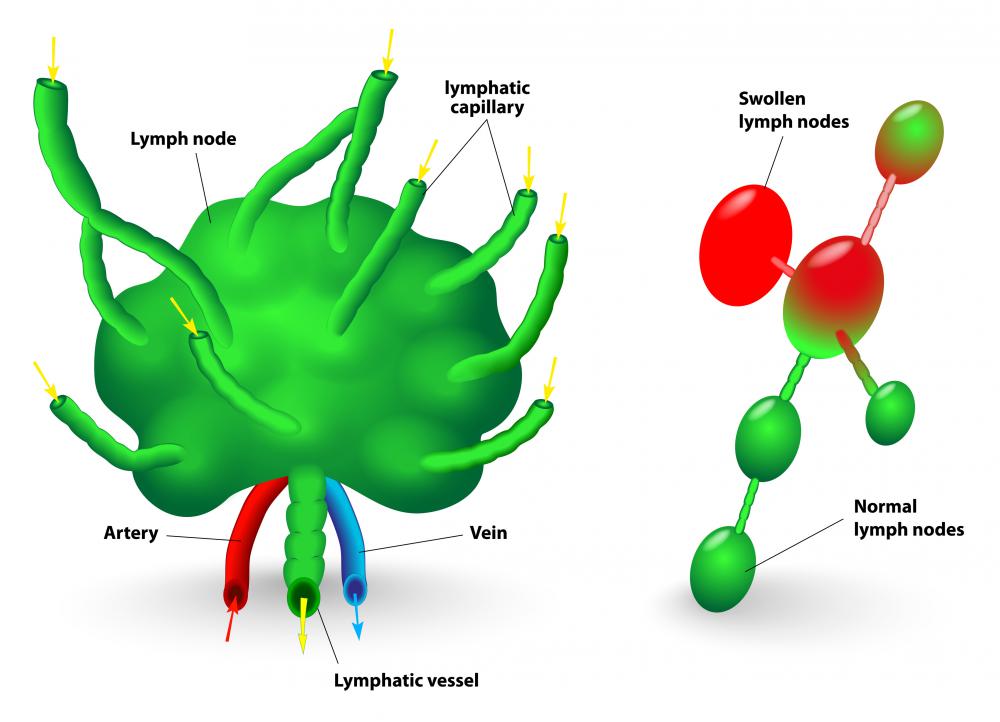At TheHealthBoard, we're committed to delivering accurate, trustworthy information. Our expert-authored content is rigorously fact-checked and sourced from credible authorities. Discover how we uphold the highest standards in providing you with reliable knowledge.
What Is the King's Evil?
The king's evil is another name for the disease known as scrofula, scrophula or struma. Scrofula is a common name for tuberculous cervical lymphadenitis, the condition in which a tuberculosis infection occurs in the lymph nodes of the neck. In France and England in the Middle Ages, it was thought that this disease could be cured by a touch from the king, referred to as the royal touch. Special ceremonies were arranged to cure the king's evil, in which hundreds of people were touched by kings. In modern times, kings have been replaced by antibiotics as the treatment of choice.
Normally, tuberculosis infects the lungs, but in patients whose immune systems are weakened, it can sometimes occur outside the lungs, in places such as lymph nodes. The terms the king's evil and scrofula specifically refer to tuberculosis affecting lymph nodes in the neck, rather than lymph nodes elsewhere in the body. In almost all cases, the disease in adults is caused by the bacterium known as Mycobacterium tuberculosis. Of all infectious diseases, tuberculosis is the oldest recorded type, and the king's evil is thought to have affected people since ancient times.

Edward the Confessor of England and Philip I of France were the first kings to touch scrofula patients in order to supposedly cure the king's evil. Those who took part in ceremonies to receive the royal touch were given gold coins, which were commonly believed to hold magical powers. Once the practice of using the royal touch for king's evil patients had begun, later kings were thought to inherit the special ability.

Some monarchs touched many people who had been afflicted by the king's evil. It is thought that Louis XV may have touched in excess of 2,000 sufferers. Charles X was the last of the French kings to carry out the practice, in 1825. The last of the English kings to bestow the royal touch on their scrofulous subjects was actually a queen, Queen Anne, whose reign lasted until 1714.

Eventually, the power required to cure the king's evil was believed to have transferred itself to coins which had been touched by a king. This occurred in the 1400s, and the coins were known as angels. Even when production of angels ceased, people believed that touching a similar-looking gold medallion would have the same magical effect. More modern treatment for scrofula commonly involves taking several different antibiotics for up to a year.
AS FEATURED ON:
AS FEATURED ON:
















Discussion Comments
I suspect the belief that the reigning monarch could cure scrofula with a touch did not come so much from the belief that the monarch inherited some healing ability as much as it was that the monarch was anointed by the Archbishop, and the gift stemmed from the divine anointing. It was the power of God, working through a divinely anointed monarch, wielding his or her power as a God-appointed monarch.
I say this because the belief was widespread that the monarch was divinely appointed. As such, this person would necessarily have some divine gifts, one of them being healing. The gifts were generally supposed to be those that would benefit their people.
If I remember my history correctly, the medallions started being distributed during the reign of Elizabeth I of England, although she also would touch people for the king's evil.
I'm thinking the custom has evolved into the monarch distributing purses with some money in them on the Thursday before Easter -- Maundy Thursday. Thus, the money is Maundy money or a Maundy purse. I think that's right. It's funny how a custom can evolve into something and most people have no idea of the origin of said custom. It's just something people do, without quite knowing why it's done.
Post your comments